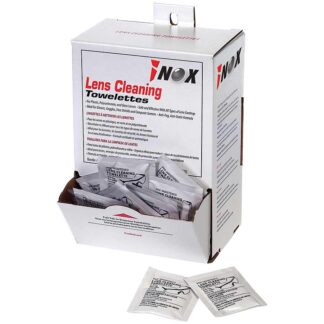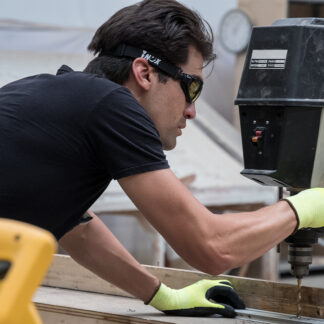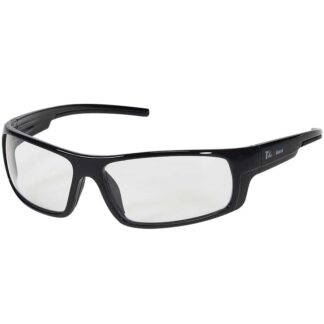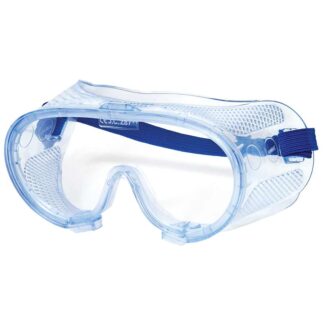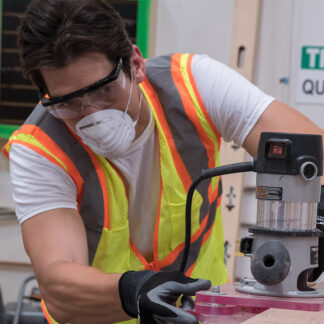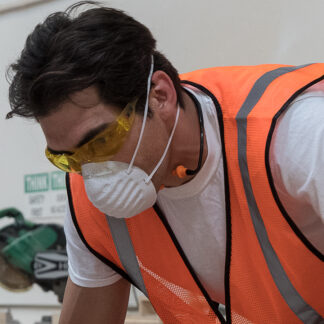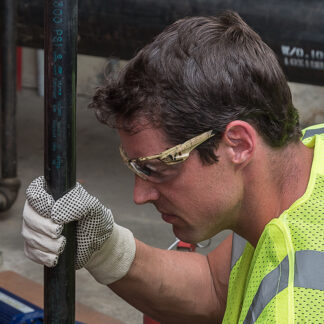Eye Protection
Work environments that involve being around airborne particles or objects, hazardous substances, or exposure to UV rays can put a worker’s eyes at risk. It’s essential to wear proper eye protection to avoid injuries and see clearly on the job. Liberty Safety offers the iNOX® eyewear protection brand which means you don't have to settle for just any pair of safety glasses or goggles.
Work environments that involve being around airborne particles or objects, hazardous substances, or exposure to UV rays can put a worker’s eyes at risk. It’s essential to wear proper eye protection to avoid injuries and see clearly on the job.
Liberty Safety offers the iNOX® eyewear protection brand which means you don’t have to settle for just any pair of safety glasses or goggles.
FAQ
OSHA lists eyewear standards by breaking them down into several categories that apply to each worker depending on their workplace environment. Here is a quick review for each one:
- General requirements: 29 CFR 1910.132 – Employers must provide appropriate PPE at no cost to the employee. This includes safety glasses or other face protection.
- General industry: 29 CFR 1910.133– An employer must guarantee each affected employee uses the appropriate eye or face protection when possible exposure to eye or face may occur from:
- flying particles
- molten metal
- liquid chemicals, acids, or acidic liquids;
- Chemical gases or vapors, or potentially UV exposure
- Construction industry: 29 CFR 1926.102 – Construction-based environments have special consideration because their work involves dangerous activities that reportedly result in many eye injuries.
All eye protection must meet minimum requirements, provide adequate protection, and be distinctly marked to facilitate identification only of the manufacturer.
Consider only those safety glasses that comply with industry safety standards to ensure you receive quality eye protection with any pair you choose.
iNOX™ eyewear performs two critical tests on every pair of eyewear they offer. The first is an optical test which looks for the following:
• Optical quality – free of bubbles, waves, and visible defects.
• Luminous transmission – clear lenses keep a minimum transmission of 85%.
• Physical requirements – free from sharp edges, defects that are likely to cause discomfort or injury.
• Minimum coverage area – appropriate areas of the user’s eyes and face are protected efficiently.
The second test iNOX™ performs comes in two parts to evaluate the type of high impact their eyewear can stand.
- The “drop ball” test determines the basic impact safety classification for lenses. A one-inch diameter steel ball is dropped onto the lens from a height of 50 inches.
- High impact testing, a high-velocity test is performed by shooting a quarter-inch diameter steel ball at the lens at a speed of 150 feet per second for spectacles and 250 feet per second for goggles.
As part of their durable construction standards, iNOX™ utilizes special TPR (thermoplastic rubber) to prevent slippage from moisture and perspiration. This technology is used in the temple tips and nose pieces to keep glasses on the wearer’s face.
Frame technology is another consideration high on their standard list. They carefully construct the eyewear so that:
• Frames consist of flexible and durable nylon materials
• Wrap around frames to prevent side shield distortion
• Straight temples rest comfortably on head without pinching
Last but not least, the frames must meet several in-house, ANSI, and sometimes, Military standards depending on what protections they will offer.

Ultraviolet A (UVA) has a longer wavelength, and Ultraviolet B (UVB) has a shorter wavelength.
Both can cause damage to your eyes in the following ways:
- UVA (320-400nm) – UVA rays remain at a relatively stable intensity all year round. Exposure to high levels of this light without the proper sunglasses protection may cause damage to your central vision.
- UVB (290-320nm) – UVB are considered the sun’s burning rays, mostly associated with sunburns. Exposure to high levels of this light without the proper sunglasses protection may cause permanent damage to the cornea and lens.
All iNOX™ eyewear lenses provide 99.9% protection from UVA/UVB rays.
Use the chart below to gain an understanding of the functionality of task-specific lenses and determine what color or tint may be best for your application and environment.
 |
Clear
Provides excellent optics for general indoor applications where impact protection is required. |
 |
Blue, Red, Orange, Brown, Gold and Silver Mirror
Use outdoors where sunlight and glare cause eye strain and fatigue. A mirror coating reflects light, reducing the amount of light that passes through the lens. |
 |
Gray
For outdoor applications where light and glare can cause eyestrain and fatigue. |
 |
Brown, Mocha, Bronze and Orange For outdoor applications where sunlight and glare cause eye strain and fatigue. |
 |
Indoor/Outdoor
A clear lens with a slight mirror coating serves the same purpose as the gray lens yet allows more visible light through the lens for indoor /outdoor use. Reduces glare from artificial light. |
 |
Amber
Blocks the blue portion of the visible light spectrum, creating maximum contrast enhancement, particularly in low light. |
 |
Infrared
Green filters protect from UV rays & flash burns |
 |
Light Blue
Reduce glare and the yellow tint often given off by industrial/ sodium vapor lighting |
When you look inside of a pair of safety eyewear, you’ll see several markings.
These numbers indicate specific safety ratings for eyewear, part of the American National Standards Institute – ANSI Z87. ANSI exists to oversee and help develop voluntary safety standards with a national consensus process. It creates a uniform testing standard and helps hold all manufacturers accountable for the level of safety they deliver in their products.
The ANSI Z87 rating helps develop a certification system for safety eyewear based on specific hazards encountered in the workplace like:
- Impact
- Heat
- Chemicals or Liquid Splash
- Dust
- Radiation
Eye protection that’s Z87.1 compliant is marked with “Z87+.” All safety eyewear manufacturers should provide product information around how their safety eyewear meets these current standards. (Is this sufficient in showing our new + icon?)
General Markings
The ANSI/ISEA Z87.1 standard prescribes specific markings for eye and face protection devices. In addition to markings required for all protectors, additional optional markings may be present to indicate a particular lens type or application as claimed by the manufacturer.
Required markings
- A manufacturer’s mark or logo
- The standard designation (Z87 or Z87-2 for prescription eyewear)
- H = product has been tested on smaller heads
NOTE: The location of the standard designation varies depending on the product configuration.
Optional markings (Do we use any of these? Or should we remove?)
+ = protector is impact-rated
W (followed by a shade number) = suitable for certain welding applications
U (followed by a scale number) = ultraviolet light protector
L (followed by a scale number) = visible light (glare) protector
V (followed by a scale number) = infrared radiations protector
S = protector is a special purpose protection
V = lens is a variable tint lens
D3 = splash protector
D4 = dust protector
D5 = fine dust protector
For more information on our line of eye protection or any other PPE workwear, contact our customer service team.

